I have an arduino with a surface mounted (SMD) microcontroller:

I know how to use a DIP arduino as a programmer for a DIP ATmega328. It's easy --you just pop your microcontroller in the holder.
However, with a surface-mount Arduino, there's no obvious. Desoldering the microcontroller is one way, but that's icky and destructive.
Can I use this Arduino as a programmer for a DIP ATmega328 without mortally damaging the board? If so, how?


